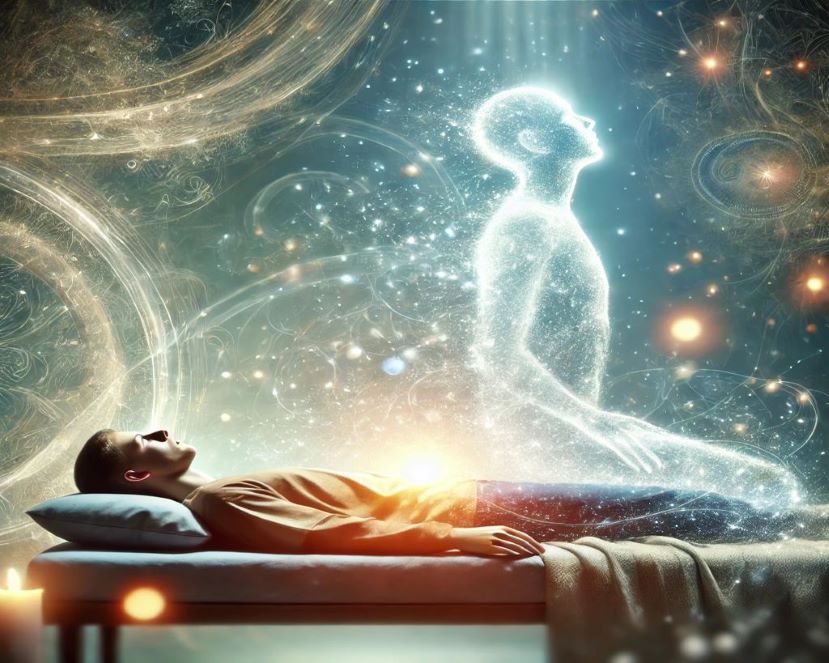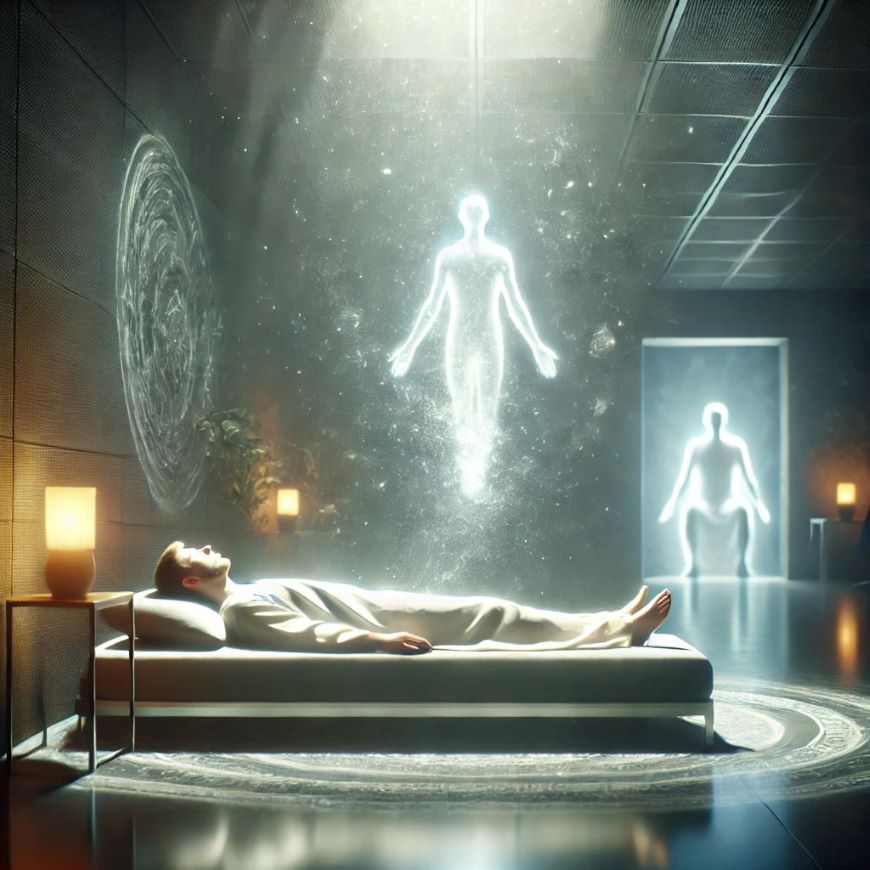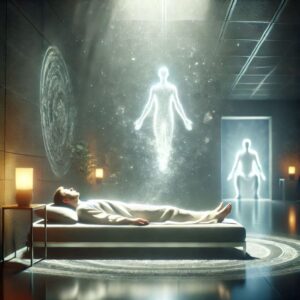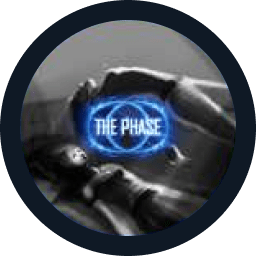Although enthusiasts and researchers have not agreed upon a universally accepted definition of “astral travel,” there is no doubt that this phenomenon exists. No matter how one characterizes it, anyone can experience astral travel projection by applying proven practices and techniques. For those wondering how to astral travel, the process involves entering a specific state of consciousness that enables exploration beyond physical perception. It’s important to note that astral travel is not the same as an out-of-body experience, and the terms should not be used interchangeably.
Astral travel is also distinct from lucid dreaming, as the definition of “lucid dreaming” may deter practitioners who are specifically interested in the astral realm. In the astral state, the human body is suspended between the states of sleep and wakefulness, and the individual is fully aware of their surroundings and able to control what they see and imagine.
What Is Astral Travel, and Why Should It Be Related to the Phase State?
The term “astral” often raises doubts, primarily due to its infrequent use. However, this rarity of use is a benefit, as it has allowed the term to maintain credibility among those who hold a more scientific worldview, meaning it has avoided being associated with mysticism and esoteric beliefs.
Astral travel can be categorized as part of the “phase” for several reasons. First, in this state, you are not awake. Your physical body is in a state of complete rest; if you happen to move, the movements are weak and slow. Second, you are not dreaming. You are fully aware of the space around you and that your physical form is resting peacefully on a soft bed. You also understand that you can influence your environment, engage in activities, or embark on journeys. This awareness is what defines the phase state.
Those who have experienced lucid dreams or out-of-body experiences may have felt similar sensations. If you’ve had such experiences, you can appreciate why astral travel projection should be associated with the phase despite the existence of other states like lucid dreaming.
The Origins of Astral Phenomena
The first documented case of an astral exit from the body is unknown since it dates back to ancient times. One does not need special powers to achieve astral travel projection, which might disappoint individuals who believe their abilities are unique. Today, humans can consciously experience an astral exit for specific purposes, such as conducting experiments or communicating with beings from other civilizations.
Every person has likely entered the astral plane at least once. Since this state occurs during the rapid eye movement phase of sleep, one might only remember fragments of the experience, if any memories remain at all. However, more often than not, people recall their astral travels vividly and completely, leading them to define and interpret the phenomenon in their own way.

Society’s View on Astral Travel
Astral exits from the body are perceived differently depending on an individual’s background. For example, a religious person might interpret the experience from a divine perspective, believing that higher powers wish to communicate with them and that they must share these insights with society. On the other hand, those who adopt a more scientific view will likely seek a rational explanation for the experience.
Different people will have different explanations for and attitudes toward an experience of entering the astral realm. Historically, people interpreted astral travel projection as a form of communication between gods and shamans or kings. There was even a time when the ability to achieve astral travel evoked fear, leading to inquisitorial efforts to combat those who mastered astral travel.
Regardless of society’s stance, the phenomenon of astral travel is real, as evidenced by thousands of documented experiences.
Carlos Castaneda on Astral Travel
According to his books, Carlos Castaneda was taught by the great shaman Don Juan Matus (a member of the Yaqui tribe), who introduced him to various techniques for engaging with consciousness. Castaneda described Matus as a mysterious and enigmatic figure. When Castaneda first began exploring how to astral travel and lucid dreaming, Matus guided him by introducing him to a parallel dimension where one can encounter other entities and beings, including those that cannot exist in reality. The lack of evidence and Matus’s mysterious nature led to widespread criticism of Castaneda’s work. Many have tried to find Matus, with some believing he might have been Cachora, a spiritual leader of the Yaqui tribe. Cachora himself claims that Castaneda studied with him, but he also admits that Castaneda embellished much in his writings.
Nevertheless, the concept of astral travel is present in Castaneda’s works, where he describes the astral realm as a separate reality accessible to anyone willing to explore it. While his interpretation is steeped in mysticism, the core idea that anyone can experience the astral plane remains valid.
Lobsang Rampa on Astral Travel
Lobsang Rampa, the author of several books on spiritual and mystical practices, including those on how to astral travel, has long been a controversial figure. His works are filled with stories of Tibetan monks, spiritual discoveries, and out-of-body experiences. It was later revealed that Rampa was a British man named Cyril Hoskin, who had no real connection to Tibetan Buddhism or monastic life. His depictions of the astral realm and other esoteric topics were largely borrowed from the popular mystical teachings of the time and often relied on unverified or fictional sources. He also fabricated many details to give his books an exotic and mystical aura.
Nevertheless, Lobsang Rampa’s books continue to enjoy widespread popularity. Many readers, particularly beginners, still find inspiration in his works, viewing them as spiritual guides, and his writings remain widely read today. This highlights the enduring appeal of esoteric ideas and mysticism for certain audiences.
Scientific Explanation of Astral Travel
From a scientific standpoint, astral travel projection, or an astral exit from the body, is viewed as an altered state of consciousness that people can experience under various conditions, such as during sleep, meditation, or under the influence of certain psychoactive substances. Modern science tends to associate these experiences with various brain functions and the brain’s reactions to altered states of consciousness rather than with the actual departure of the soul from the body.
In recent years, the view that astral travel could be one of many under-researched but natural states of human consciousness has gained traction. Some scientists hypothesize that such experiences result from activity in specific parts of the brain, such as the parietal lobe, which is responsible for spatial awareness of the body, or the temporal lobe, which is involved in processing memories and emotions.
While astral travel is still largely uncharted territory, scientists generally acknowledge the existence of a distinct state in which the individual seems to enter the astral plane. Since the 1990s, practical research has been conducted on what was previously only mentioned in the works of individual authors. Today, science encourages the examination of how to astral travel not as a mystical reality but as a unique and poorly understood state of human consciousness that can be studied and applied for personal development, gaining insights into inner experiences, and expanding the boundaries of perception.
FAQ
Recommended reading
Top 5 Best Books on Lucid Dreaming









